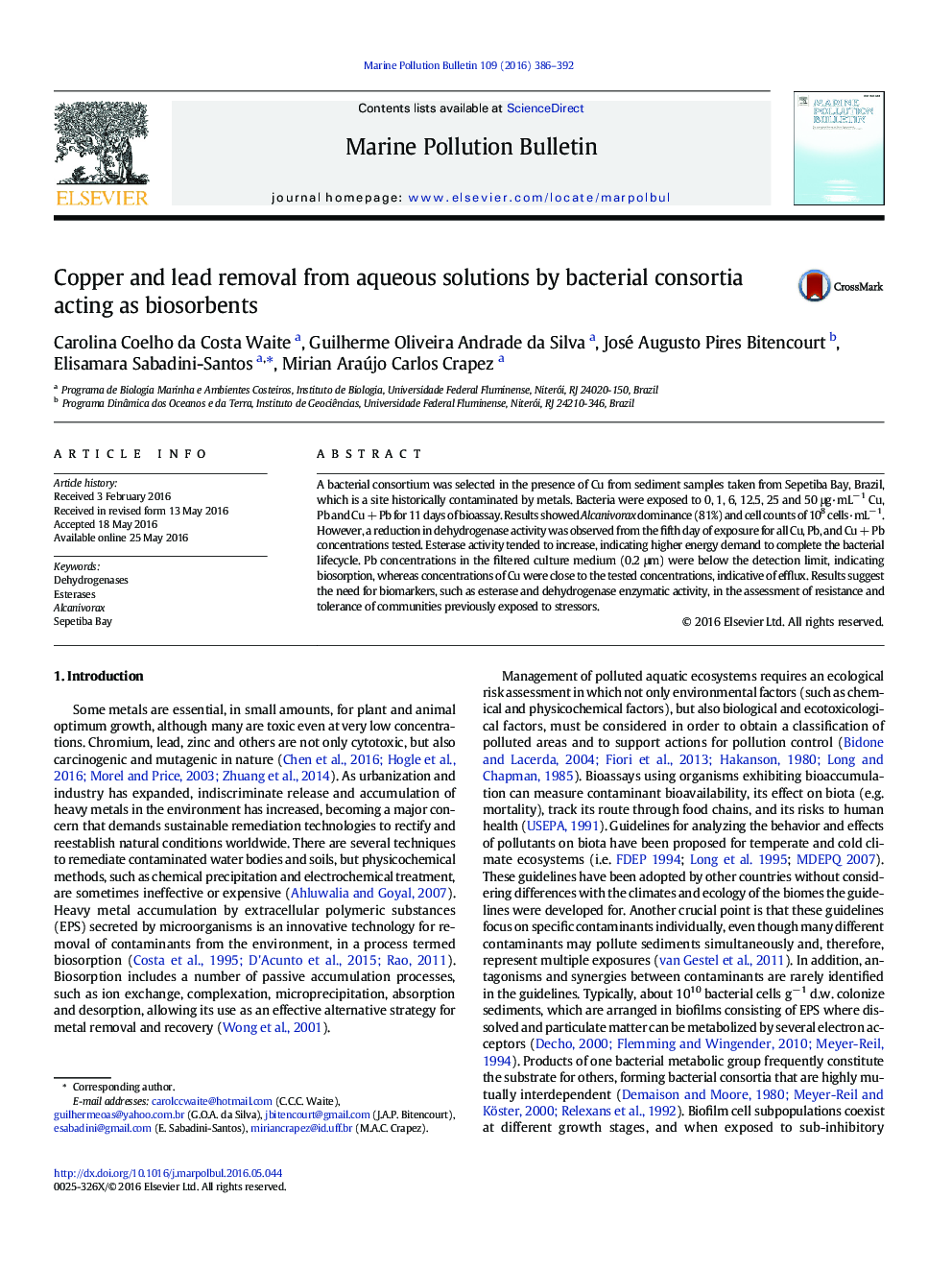| کد مقاله | کد نشریه | سال انتشار | مقاله انگلیسی | نسخه تمام متن |
|---|---|---|---|---|
| 4476415 | 1315594 | 2016 | 7 صفحه PDF | دانلود رایگان |
• A bacterial consortia, mainly Alcanivorax, was selected from contaminated sediments.
• Its exposure to Cu, Pb and Cu + Pb was monitored for 11 days of bioassay.
• The biomass kept 108 cells·mL− 1 and enzymes showed distinct trends during exposure.
• Results indicated lead biosorption and copper efflux for 11 days of exposure.
• Biomarkers are necessary to assess resistance and tolerance of stressed communities.
A bacterial consortium was selected in the presence of Cu from sediment samples taken from Sepetiba Bay, Brazil, which is a site historically contaminated by metals. Bacteria were exposed to 0, 1, 6, 12.5, 25 and 50 μg·mL− 1 Cu, Pb and Cu + Pb for 11 days of bioassay. Results showed Alcanivorax dominance (81%) and cell counts of 108 cells·mL− 1. However, a reduction in dehydrogenase activity was observed from the fifth day of exposure for all Cu, Pb, and Cu + Pb concentrations tested. Esterase activity tended to increase, indicating higher energy demand to complete the bacterial lifecycle. Pb concentrations in the filtered culture medium (0.2 μm) were below the detection limit, indicating biosorption, whereas concentrations of Cu were close to the tested concentrations, indicative of efflux. Results suggest the need for biomarkers, such as esterase and dehydrogenase enzymatic activity, in the assessment of resistance and tolerance of communities previously exposed to stressors.
Journal: Marine Pollution Bulletin - Volume 109, Issue 1, 15 August 2016, Pages 386–392
